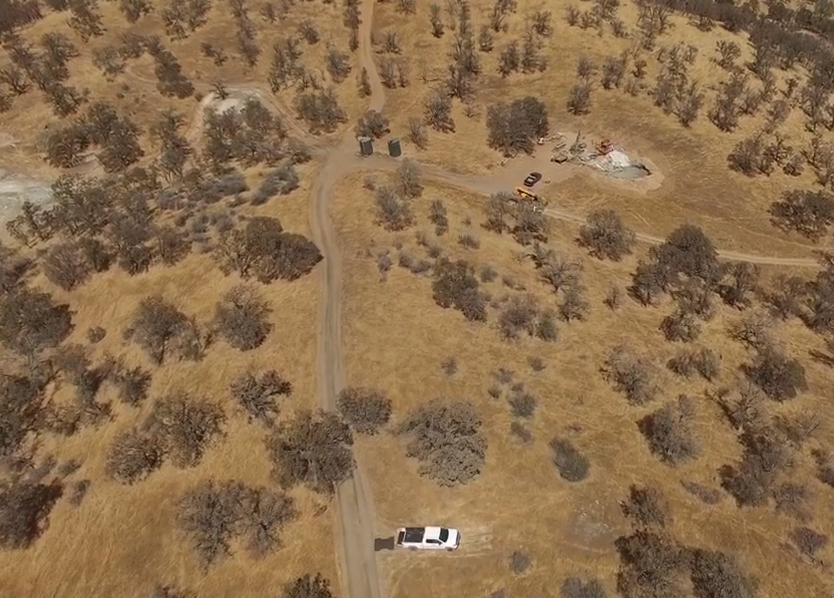
The property was mined from 1943 to 1945 when 20.5 million tonnes of ore grading 12.3% zinc, 0.36% copper, 0.48% lead, 128.6 grams silver per tonne, and 2.1 grams gold per tonne were excavated. Drilling by several operators continued sporadically until Blue Moon acquired the project in 1994.
The Blue Moon project currently has a 43-101 compliant inferred resource of 7.8 million tonnes grading 4.95% zinc, 0.46% copper, 1.4 grams gold per tonne, 45.6 grams silver per tonne, and 0.29% lead (8.07% zinc-equivalent). The resource contains 771 million lb. of zinc, 71 million lb. of copper, 46 million lb. of lead, 300,000 oz. of gold, and 10 million oz. of silver.
The company has digitized the historic data and found the deposit to be open at depth and to the south. Drilling in 2018 and 2019 were not included in the resource estimate and highlights included 9.1 metres grading 30.3% zinc, 1.7% copper, 1.67 grams gold per tonne, 71 grams silver per tonne (36.8% zinc-equivalent) in 2018 and 7.6 metres grading 25.6% zinc, 0.9% copper, 0.68 gram gold per tonne and 17 grams silver per tonne (28.5% zinc-equivalent) in 2019.
Additional drilling in 2020 traced the massive sulphide lenses for 900 metres along plunge, and the mineralization is open to the surface and at depth. Blue Moon bought out Australian partner Platina Resources in December 2020 and has a drill permit extension to June 26, 2023.
Blue Moon initiated the current phase of drilling in September 2021 with three or four step-out holes totalling about 2,400 metres. Targets have been chosen to extend mineralization in known lenses and the untested area beneath the historic workings at the American Eagle deposit. An untested area surrounded by a strong footwall and stringer mineralization is also to be drilled.
Blue Moon expects that conventional flotation will produce multiple concentrates. In 1988, drill core samples were provided for metallurgical testing and recoveries of up to 95% for zinc and lead, 93% for copper, 65% for gold, and 70% for gold were achieved.
Blue Moon is planning an underground mine to reduce the surface footprint of the project. It has hired environmental and engineering consultants to assist in the permitting. Since the property hosts a past-producing mine, it had an underground permit and reclamation plan approved in 1991.
Blue Moon also owns 100% of the Yava polymetallic property in Nunavut. A former owner produced a non-compliant resource estimate in 1991. The Main zone was believed to contain 1.3 million tonnes grading 4.96% zinc, 1.03% copper, 1.6% lead, 117 grams silver per tonne, and 0.27 gram gold per tonne.
Blue Moon has a market capitalization of $4.7 million.
Copper Fox Metals (TSXV: CUU; US-OTC: CPFXF) has three copper exploration projects in Arizona — Van Dyke, Mineral Mountain and Sombrero Butte.
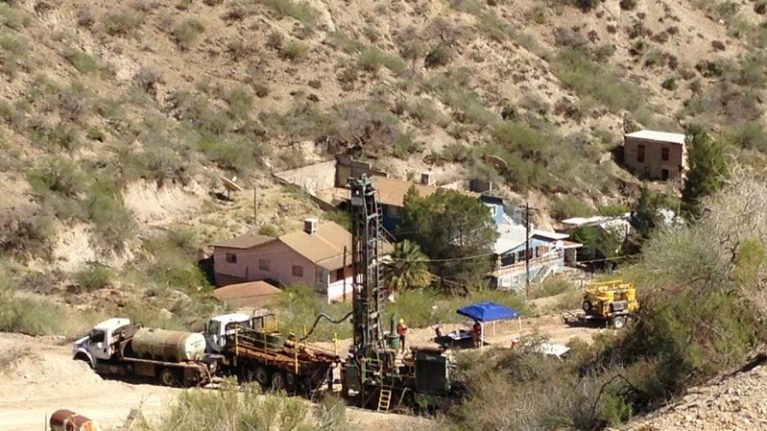
Copper Fox has a 100% working interest in the in situ recovery (ISR) Van Dyke copper project about 145 km east of Phoenix. A 2020 preliminary economic assessment put the mine life at 17 years with peak production of 85 million lb copper annually in years two through 12, declining in the final years of operation. Total output over the life of the project would be 1.1 billion lb. of copper. The all-in sustaining cost per lb. copper was pegged at $1.14. Van Dyke carries an initial capex requirement of $290.5 million and a payback period of 2.1 years. The base case PEA used a copper price of $3 per pound. The post-tax net present value at a 7.5% discount rate is $644.7 million and the internal rate of return is 43.4%.
Copper Fox updated the resources at Van Dyke in 2020 and included an indicated portion for the first time. The indicated resource is 97.6 million tonnes grading 0.33% copper for 717 million lb. of soluble copper. The inferred resource is 168 million tonnes grading 0.27% copper for 699 million lb. of soluble copper.
The current work program at Van Dyke includes groundwater studies and drill core logging.
At the Sombrero Butte porphyry copper project east of the town of Mammoth, Copper Fox is earning a 100% interest. The budget this year is $700,000 for an induced polarization (IP) survey, mapping, sampling and prospecting.
Historical production on the Sombrero Butte property occurred from 1903 to 1920 in the Magma Chief mine. At the time, ‘low-grade’ ore assayed 3% to 5% copper and ‘higher grade’ ore along open cuts and tunnels ran 20% to 33% copper.
Copper Fox also owns 100% of the Mineral Mountain porphyry copper project 16 km east of the town of Florence. Work the company did in 2019 outlined a 4,500-metre long and up to 2,000-metre wide area containing about 600 copper showings. A second area of mineralization occurs in a northeast trending area about 2,800-metres-long by 400-metres-wide characterized by malachite and chrysocolla hosted in quartz veins and fractures. A third zone of copper-molybdenum mineralization was also identified in 2019.
Results from this year’s IP study will be used to plan a drilling program.
In British Columbia, Copper Fox has interests in two copper properties. The company purchased 100% of the Eaglehead copper project, 50 km east of Dease Lake, for C$1.2 million in April 2021. Historical drilling intersected multiple zones of porphyry mineralization. Preliminary metallurgical tests are underway.
The most advanced project in the company’s portfolio is Schaft Creek, 60 km south of Telegraph Creek. The project is a joint venture with Teck Resources (75%) and Copper Fox holds the remaining 25%.
A preliminary economic assessment completed earlier this year for Schaft Creek foresees a mine life of 21 years at a nominal milling rate of 133,000 tonnes per day. Over the life of the mine, 2.3 million tonnes of copper, 3.7 million oz. of gold, 226 million lb. of molybdenum, and 16.4 million oz. of silver would be produced in concentrates. Initial capital costs would be $2.65 billion plus sustaining costs of $848.7 million (including closure costs). All-in sustaining costs per lb. of copper produced would be $1.14.
Copper Fox has a market capitalization of $120 million.
Elevation Gold Mining
Formerly known as Northern Vertex Mining, Elevation Gold Mining’s (TSXV: ELVT; US-OTC: NHVCF) principle holding is its 100%-owned Moss gold-silver mine in Mohave County, Arizona, about 130 km southeast of Las Vegas, Nevada. This is a low-cost open pit mine with oxide ore, all of which is treatable with heap leaching.
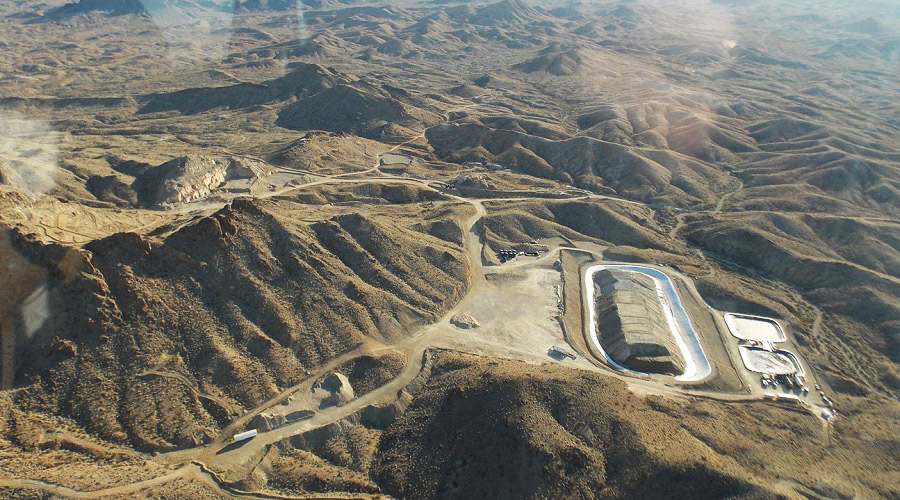
When the Moss mine was planned in 2015, a mining rate of 5,000 tonnes per day was envisioned. But with exceptional crusher performance and a dedicated team, throughput has been higher since the plant was commissioned in 2018. Gold is recovered from pregnant solution at an on-site Merrill-Crowe plant and refinery. Recovery is 77% for gold and 43% for silver.
The reserve estimate and mine plan have recently been updated. The project contains proven and probable reserves of 12.7 million tonnes grading 0.45 grams gold per tonne and 5.4 grams silver per tonne. Contained metals are 184,500 oz. of gold and 2.2 million oz. of silver.
The measured and indicated resources (including reserves) are 38.9 million tonnes grading 0.39 gram gold per tonne and 4.6 grams silver per tonne for 490,200 oz. of contained gold and 5.8 million oz. of silver. The inferred resource is 6.6 million tonnes grading 0.35 gram gold per tonne and 4.5 grams silver per tonne for contained metal of 73,800 oz. of gold and 940,000 oz. of silver.
The Moss mine has two active pits, East and West, and Elevation Gold continues to explore. Mineralization under both pits remains open, which the company says will add ounces to resources and lower the strip ratio in the pits.
Drilling beneath the pits continues to return significant gold and silver intercepts: Hole AR21-298R cut 76.2 metres grading 0.73 gram gold per tonne and 6.5 grams silver per tonne, including 6.1 metres at 3.62 grams gold and 36.43 grams silver. Hole 494R intersected 109.7 metres grading 0.49 gram gold per tonne and 6.41 grams silver per tonne, including 13.7 metres grading 1.52 grams gold and 20.61 grams silver. Hole 504R intersected 15.2 metres grading 2.17 grams gold per tonne and 35.14 grams silver per tonne, including 4.6 metres at 5.33 grams gold and 102.33 grams silver.
Elevation Gold has plans to increase annual throughput at Moss to 888,000 tonnes per quarter, reduce mining costs, and explore permitted pit extensions and generate additional drill targets on its land package.
Between the Moss mine and Las Vegas, Elevation has an option to acquire 100% of the Hercules gold-silver project. Four surface gold system are known, and the company believes they might be connected at depth, creating a single large oxidized system. No resource estimate has been made for this property.
Elevation Gold has a market capitalization of $58.8 million.
Equinox Gold
Equinox Gold (TSX: EQX; NYSE: EQX) is a gold producer with mines in Brazil, Mexico and the United States plus the Greenstone gold development project and several exploration properties in Canada.
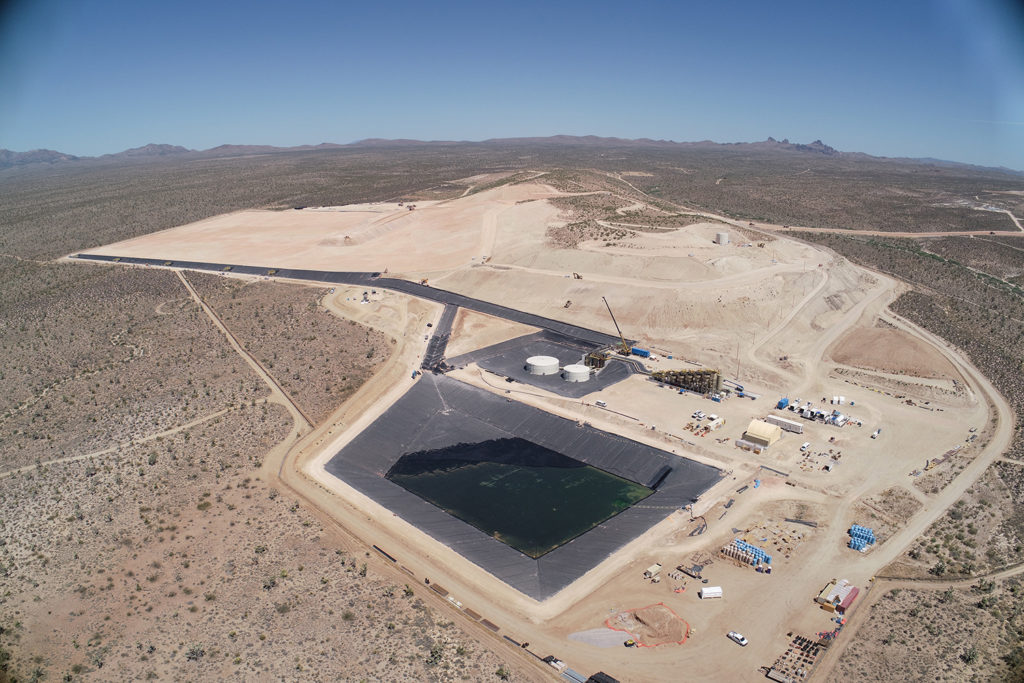
The company has two producing mines in southern California, Mesquite in Imperial County and Castle Mountain in San Bernardino County. Guidance for 2021 at the Mesquite mine is 130,000 to 140,000 oz. of gold and is 20,000 to 30,000 oz. of gold at Castle Mountain.
The Castle Mountain open pit and heap leach produced more than 1 million oz. of gold from 1992 to 2004. Rising gold prices led Equinox to revisit the project. The phase one re-opened operation poured its first gold in November 2020. Now it is undergoing expansion, which will produce 218,000 oz. of gold annually and have a life of 20 years.
The phase two feasibility study completed in March 2021, suggests the addition of a mill facility to treat higher grade ore and continued heap leaching of lower grade materiel. Equinox expects to apply for an amended mining permit and to file an updated environmental impact assessment.
Equinox recently expanded the life of the Mesquite mine by 14 years with total production of 2.1 million oz. of gold from the heap leach and 1.1 million oz. of gold from milled ore. All-in sustaining costs will be $858 per oz. of gold over the life of the mine.
The base case used a gold price of $1,500 per oz. and outlined an initial capital requirement of $389 million for infrastructure and $121 million for a leased mining fleet. The sustaining capital would be $147 million.
The Castle Mountain expansion has an after-tax net present value at a 5% discount rate of $639 million and an internal rate of return of 18.3%. With a leased fleet, payback would take 5.4 years.
Construction on the phase two expansion could begin in two years and the full processing rate be reached two years after that.
Equinox Gold purchased 100% of the producing Mesquite mine in 2018 from New Gold. It has been in operation since 1985 and, for the last ten years, has produced 130,000 oz. of gold annually. For 2021, the company expects the mine will produce between 130,000 and 140,000 oz. of gold at an all-in sustaining cost of $1,375 to $1,425 per ounce.
The open pit and heap leach Mesquite mine is nearing the end of its originally planned life. With current resources it has about two or three years’ remaining mine life plus residual leaching. But Equinox is focused on extending the mine life through both exploration and optimization. The immediate exploration upside is 40 million tonnes of potentially mineralized material in the oxide dump as well as new in-pit and near-pit targets.
In September 2021, the company released new resource numbers for Mesquite. The proven and probable reserves are 30.3 million tonnes grading 0.48 gram gold per tonne for 471,000 oz. of contained gold. This is a 28% drop in contained gold from the earlier estimate made in 2021, due to mining depletion.
Contained gold in the measured and indicated resource category (exclusive of reserves) increased by 65% to 1.4 million oz. in 105 million tonnes grading 0.41 gram gold per tonne. Contained gold in the inferred resource rose 30% to 912,000 oz. in 84 million tonnes grading 0.34 gram gold per tonne.
Equinox has two gold mines in Mexico (Los Filos and Mercedes) and three in Brazil (Aurizona, Fazend and RDM). As well in Brazil, the company is refurbishing the infrastructure and retrofitting the mill at the former Santa Luz gold mine in preparation to pour its first gold in the first quarter of 2022.
In Canada Equinox broke ground in October at the Greenstone gold mine 275 km northeast of Thunder Bay in Ontario. This is a joint venture between Equinox (60%) and Orion Mine Finance (40%). The mine is expected to produce over 5 million oz. of gold during its initial 14 year life. The construction cost is estimated at C$1.53 billion with the first gold pour targeted for the first half of 2024.
Equinox Gold has a market capitalization of $2.3 billion.
Kore Mining
Kore Mining (TSXV: KORE; US-OTC: KOREF) has two advanced gold projects in southern California: Imperial in the county of the same name and Long Valley in Mono County.
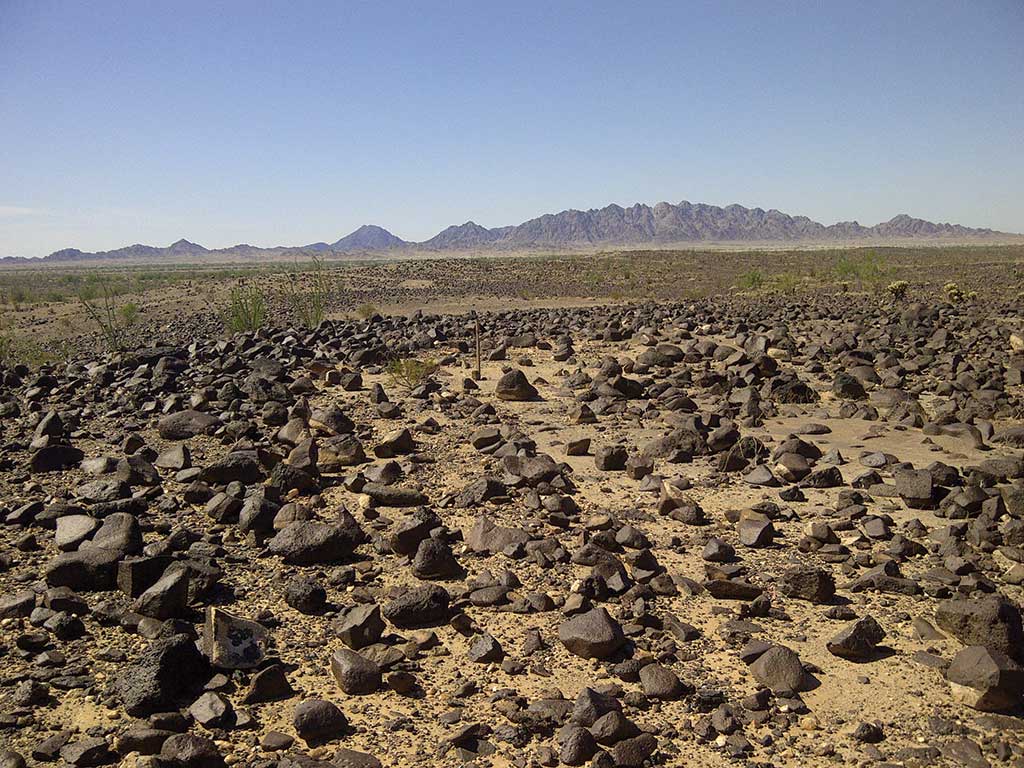
The Imperial project has district scale potential covering 28 sq. km of the Mesquite-Imperial-Picacho district. The area has seen no exploration in a least 20 years, the company says. It has chosen five gold anomalies on a structural trend as its targets. A drilling permit is expected in the second half of next year.
One challenge of the Imperial project is it proximity to the Salton Sea. As what was once a large, landlocked body of water continues to dry up, previously submerged lakebed is exposed and creates dust that is potentially toxic to local communities. To clean up the area, California state agencies have begun a ten-year plan that aims to suppress the salty emissions and build a 12,150 hectare wetland for the plants and animals that have disappeared. Kore Mining has developed project ACES, the delivery of local materials to aid in remediating the exposed lakebed.
Kore submitted the mine permit application in the last half of 2021. This would be an open pit with run-of-mine ore placed on a heap leach. Imperial has robust economics, even at a gold price of $1,300 per oz., but Kore used $1,450 per oz. of gold for its calculations for the amended preliminary economic assessment base case released in June 2021.
Kore plans to develop an open pit with heap leach that would have a mine life of eight years and produce 146,000 oz. of gold annually. The all-in sustaining cost is estimated to be $852 per ounce.
Pre-production capex would be $143 million, and the post-tax payback period would be 2.7 years at a gold price of $1,450 per ounce. That would be followed by sustaining capital totalling $60.5 million and closure costs of $147.7 million. The after-tax net present value would be $458 million and the internal rate of return 44%.
At the end of 2019, the Imperial project contained 900,000 oz. of gold in 46 million indicated tonnes grading 0.59 gram gold per tonne and 1.3 million oz. of gold in 91 million inferred tonnes grading 0.46 gram gold per tonne.
Kore continues to work closely with the U.S. Bureau of Land Management to secure additional permits to advance the Imperial gold project to feasibility and mine permitting.
The Long Valley PEA dated September 2020 examined the potential of this large, shallow oxide gold deposit. It estimated the indicated resource to be 63.7 million tonnes grading 0.58 gram gold per tonne for 1.2 million contained oz. of gold and the inferred resource to be 22 million tonnes grading 0.65 gram gold per tonne for 453,000 oz. of gold. The open pit mine with a heap leach would have a life of seven years producing 102,000 oz. annually at an AISC of $773 per ounce.
Kore says the project will need an initial capital expenditure of $161 million and has an after-tax payback of 1.8 years, using a gold price of $1,600 per oz. for these calculations. The after-tax NPV at a 5% discount would be $273 million and the IRR 48%.
The silver content of the Long Valley project was not assayed during historic drilling and is not in the current resource. Metallurgical testing has shown silver recovery is possible in the heap leach, therefore Kore will include silver assays in any reports going forward.
Kore Mining has a market capitalization of $37.7 million.
Laramide Resources
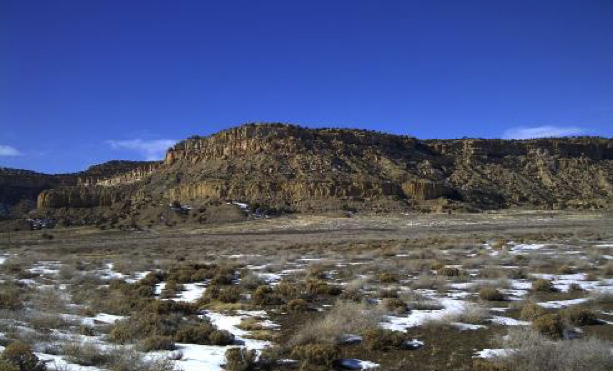
Laramide Resources (TSX: LAM; US-OTC: LMRXF; ASX: LAM) is focused on potential uranium production in both the United States and Australia.
The most advanced of its projects is the 100%-owned Churchrock property in McKinley County, New Mexico. This would be an in situ recovery (ISR) operation and is already permitted. The property contains the past-producing Old Church Rock uranium mine operated by Phillips Petroleum in the 1960s and in the early 1980s by United Nuclear Corp.
Laramide consolidated data from previous operators and digitized the result to represent 561,300 metres of drilling. A 43-101 compliant resource in 2017 estimated inferred resources at 33.9 million tonnes grading 0.075% uranium oxide (U3O8) for 50.8 million contained lb. of uranium oxide. The company is working on the initial preliminary economic assessment.
There is also exploration potential at Churchrock. Resource modeling has already identified new targets, which could add additional tonnage to the deposit, and the inferred resources can be updated. There are no reserves yet estimated for the project.
Laramide’s ISR division also holds 100% of the Crownpoint uranium project 40 km from Churchrock. This project is permitted for a 3 million lb. yellowcake processing plant. Although there is an inferred resource of 2.5 million tonnes averaging 0.10% uranium oxide for 5.1 million lb. of contained uranium oxide, Laramide had not, as of 2018, developed a mine plan except to say the deposit appears amenable to ISR.
The company also owns 100% of the La Jara Mesa uranium project in Cibola County, New Mexico. This deposit is suitable for underground mining. The current 43-101 compliant resource calculation was completed in 2006 and amended in 2007. The indicated resources were estimated at 1.4 million tonnes averaging 0.23% uranium oxide for 7.2 million lb. of contained uranium oxide. The inferred portion was 700,000 tonnes grading 0.2% uranium oxide for 3.1 million lb. of contained uranium oxide.
Laramide has received a draft environmental impact statement from the U.S. Forest Services, and a review is pending.
Laramide also owns 100% of the La Sal uranium property in Utah, but previous owners never produced a 43-101 compliant resource estimate. The collapse of the uranium price in 1978 forced Homestake Mining to shut down the project although a feasibility study has been completed.
In Australia, Laramide owns the Murphy green field uranium project in the Northern Territory and the Westmoreland development stage uranium project in Queensland.
Laramide consolidated its interest in the Murphy project in October 2020 and now holds a 100% interest in the tenements it has been exploring. The tenements cover an area of 683 sq. km along the Westmoreland trend. Having the results of an airborne geophysical survey completed in 2014, Laramide anticipates ground-based activity will be the next step. No resource estimate has yet been made.
The Westmoreland uranium project is at the advanced exploration stage, thanks to work done by previous operator Rio Tinto. Laramide has continued to advance the project as the economics are positive even at low uranium prices. A PEA was done in 2016 that put resources at 18.7 million indicated tonnes grading 0.09% uranium oxide for 36 million lb. of contained uranium oxide and 9 million inferred tonnes averaging 0.08% uranium oxide for 15.9 million lb. of contained uranium oxide.
Laramide Resources has a market capitalization of $139.8 million.
Southern Empire Resources
Southern Empire Resources’ (TSXV: SMP; US-OTC: SMPEF) primary focus is the brownfields Oro Cruz gold project in Imperial County, California. It is hosted in the northern end of the Caborca orogenic gold trend, which also hosts Equinox Gold’s Mesquite mine and Fresnillo’s La Herradura mine.
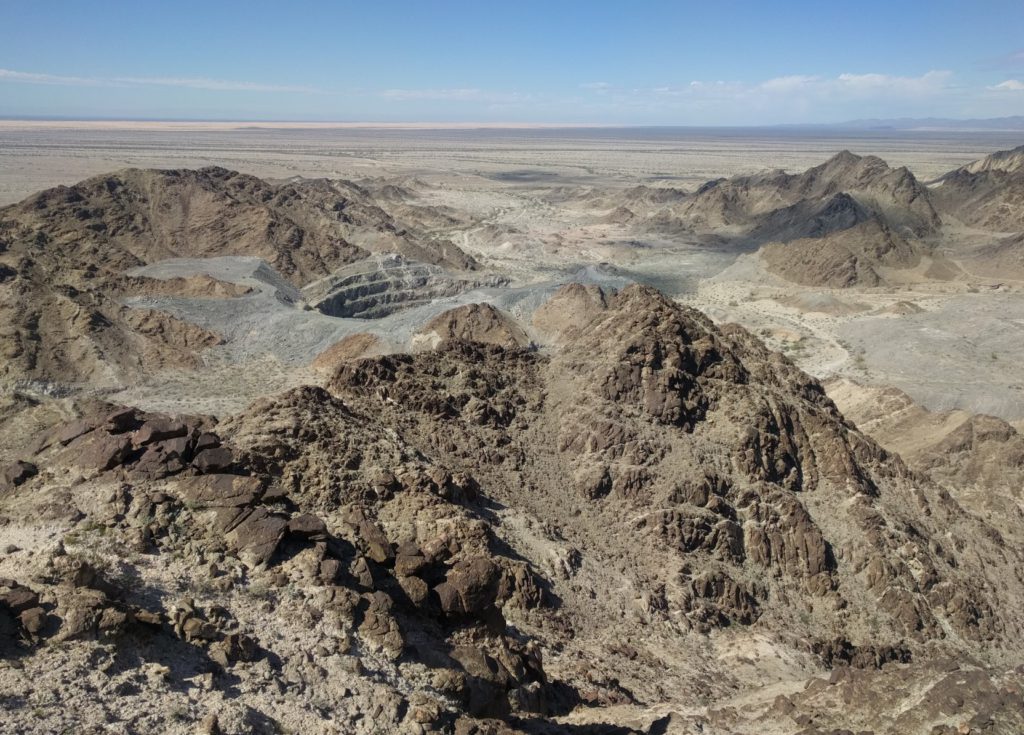
Oro Cruz hosts former gold producers Oro Cruz, American Girl, American Boy, and Padre y Madre. The pits and underground mines were last in operation in 1996, although their history goes back to the arrival of the Spanish in the area.
Over 2 km of existing underground developments are in pristine condition, which gives Southern Empire a head start on underground exploration. Stripping for an extension of the Cross pit is partially complete.
The 43-101 resource estimate prepared in 2010 put the inferred resource at 4.4 million tonnes, grading 2.2 grams gold per tonne at a 0.68 gram gold cut-off grade. There are 341,800 oz. of gold contained in the resource, but the company is seeking at least a million ounces of contained gold.
Historical waste rock dumps, sampled in June 2021, might contain ounces that can be added to the total. The American Girl dump assayed 0.448 gram gold per tonne from 104 surface rock samples; the Padre y Madre dump assayed 0.203 gram gold per tonne from 54 surface samples; and the Oro Cruz dump averaged 0.208 gram gold per tonne from 29 surface samples.
Sonic drilling in ten holes at the historic American Girl leach pad returned between 0.510 and 0.235 gram gold per tonne over lengths of roughly 30 metres. Ten similar holes at the Padre y Madre leach pad returned between 1.027 grams gold per tonne and 0.344 gram gold per tonne over lengths that varied between 3 and 10 metres.
Preliminary metallurgical tests to determine gold recovery over 96 hours was 74.4% from American Girl samples and 89.7% from Padre y Madre samples. Tests are continuing.
Southern Empire has a memorandum of understanding with the U.S. Bureau of Land Management to determine respective responsibilities and procedures for the environmental assessment at Oro Cruz. The BLM deemed the earlier exploration plan of operations for Oro Cruz complete. That plan calls for up to 65 drill pads, a staging area at the Cross mine underground portal, and road construction.
The Oro Cruz property has excellent access and infrastructure, including a high-voltage power line, and a local workforce is available. Field studies for environmental, water and cultural resource assessments are underway.
Southern Empire has two other early stage gold exploration projects in its portfolio. One is the Pedro property in Durango, Mexico, where the company is earning a 100% interest from Commander Resources, and the other is the Eastgate project (85% Southern Empire and 15% Kermode Resources) in Churchill County, Nevada.
Southern Empire has a market cap of $4.8 million.
Themac Resources Group
Themac Resources Group (TSXV: MAC; US-OTC: MACQF) relies on its subsidiary, New Mexico Copper, to operate its wholly owned copper porphyry development project in Sierra County, New Mexico. The property hosts the former Copper Flat copper-molybdenum-gold-silver mine. A feasibility study for re-opening the project was completed in 2014 and updated in 2020 by Themac.
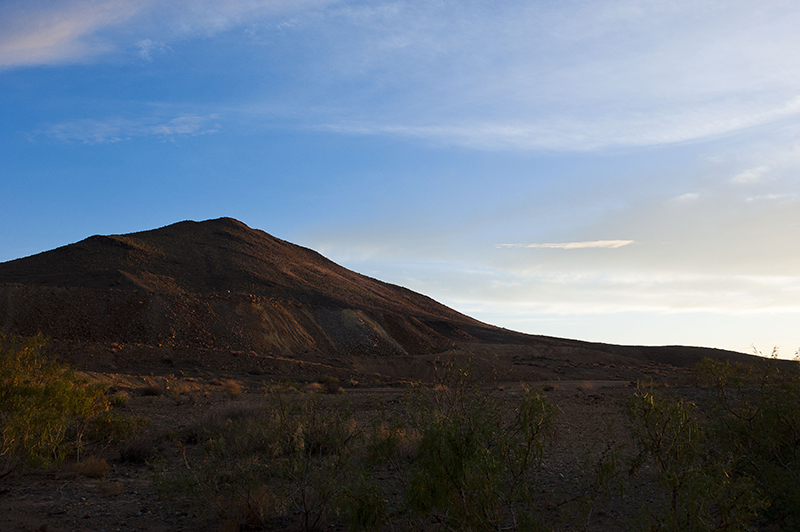
In the past 30 years there have been two efforts to bring the Copper Flat open pit mine into commercial production. Quinterra Minerals invested $89 million to bring the mine into production in 1982 and operated it for 3.5 months. The mine went on care and maintenance due to low copper prices and high borrowing rates.
The second effort was by Alta Gold, which acquired the property in 1994. It completed the final draft of the environmental impact statement in 1999 before the company went bankrupt.
Themac acquired Copper Flat in May 2011 and has been advancing and de-risking the project over the last ten years. The feasibility study estimated measured and indicated resources at 305.2 million tonnes grading 0.023% copper, 0.007% molybdenum, 0.002 gram gold per tonne, and 0.05 gram silver per tonne. The measured and indicated category contains 1.4 billion lb. of copper, 2.2 million lb. of molybdenum, 28,000 oz. of gold, and 14.7 million oz. of silver.
The inferred resource is 27.6 million tonnes grading 0.2% copper, 0.004% molybdenum, 0.001 gram gold per tonne, and 0.02 gram silver per tonne, containing 110.6 million lb. of copper, 2.2 million lb. of molybdenum, 28,000 oz. of gold, and 553,000 oz. of gold.
Based on these resources, the mine life would be 11 years during which time 628 million lb. of copper, 15.7 million lb. of molybdenum, 227,000 oz. of gold, and 5.9 million oz. of silver would be recovered. The study did not offer all-in sustaining costs but did provide “total operating costs” after by-product revenue of $1.46 per lb. of copper.
Figures in the updated 2018 feasibility study put the initial capital cost at $274 million, including $10.5 million for mine preproduction and $328.5 for a mineral processing plant. Payback would be achieved after 3.3 years. Metal prices of $3.25 per lb. for copper, $10.50 per lb. for molybdenum, $1,300 per oz. for gold, and $16 per oz. for silver were used in the study.
The base case after-tax net present value at an 8% discount rate would be $186.7 million and the after-tax internal rate of return would be 20.8%. Should base metal prices increase by 20% from those listed above, the IRR would increase to 30.5%, according to the feasibility study.
Brownfield infrastructure at the Copper Flat project amounts to a head start on construction. The property has concrete foundations for the concentrator grinding, flotation and thickening circuits. There are also foundations for a truck shop, administration building, and the laboratory, as well as for the primary crusher, electrical substation and coarse ore reclaim tunnel. These were built by Quinterra in the early 1980s.
Themac began permitting efforts for the Copper Flat mine and mill in 2010. The property has federal, state and private ownership, and the U.S. Bureau of Land Management will be the lead agency.
Besides financing, the only major impediment to development is the question of water rights for the Copper flat project. Themac lost most of the water rights in 2017, according to the local Sierra County newspaper. The company appealed the decision, and in the meantime has leased water rights and applied to the state engineer for permission to move the rights from the Sunland Park-Santa Teresa area near El Paso to the production wells about 5 km from the Caballo Lake and Rio Grande River. Water rights owners from the Caballo and the Santa Teresa areas protested, and a hearing has been scheduled on the matter for September 2022.
Themac Resources Group has a market capitalization of $3.9 million.
(This article first appeared in The Northern Miner)




